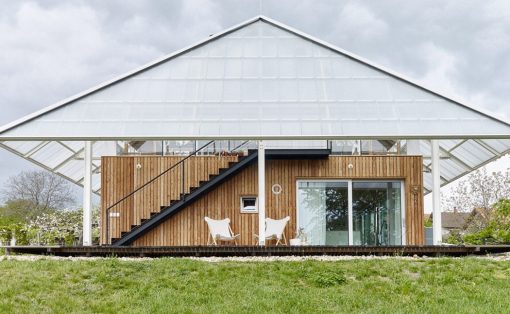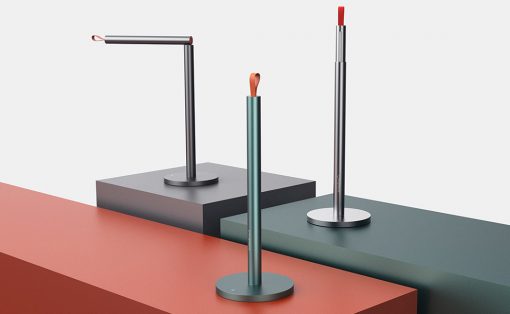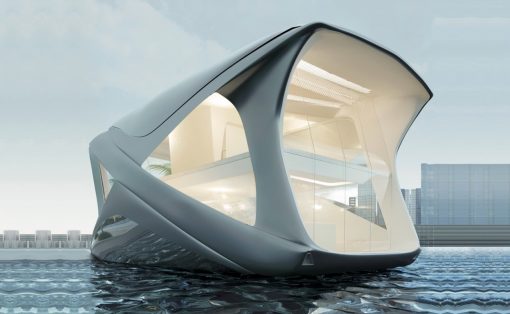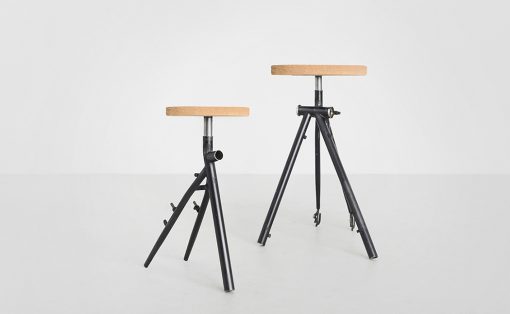
Cabins have been a relaxing and quintessential getaway option for everyone for ages galore. They’re the ultimate safe haven in the midst of nature, if you simply want to get away from your hectic city lives, and unwind. If you want a simple and minimal vacation, that lets you truly connect with nature, without any of the materialistic luxuries most of us have gotten accustomed to, then a cabin retreat is the answer for you! And, we’ve curated some beautiful and super comfortable cabins that’ll be the perfect travel destination for you. From a prefab energy-efficient cabin that promises to be your green dream home to a restored tiny cabin with midcentury charm and modern amenities – these mesmerizing and surreal cabins are the ultimate retreat, you’ve been searching for!
1. Atri


Designed by a company called Naturvillan, Atri is a newly built A-frame villa located on the shores of Lake Vänern. The self-sustaining and climate-smart home is like a sustainable greenhouse in the middle of the mountains! It provides stunning views of the lake, as well as of the surrounding majestic trees, and a natural plot with rock slabs.
Why is it noteworthy?
It is A-shaped with a stable base directly on the mountain and has a continuous axis so you can see through the whole house in one view. As you look up the house blends in among the trees, becoming part of the natural landscape.
What we like
- Self-sustaining and sustainable
- Climate-smart
What we dislike
- No complaints!
2. CABN.CO
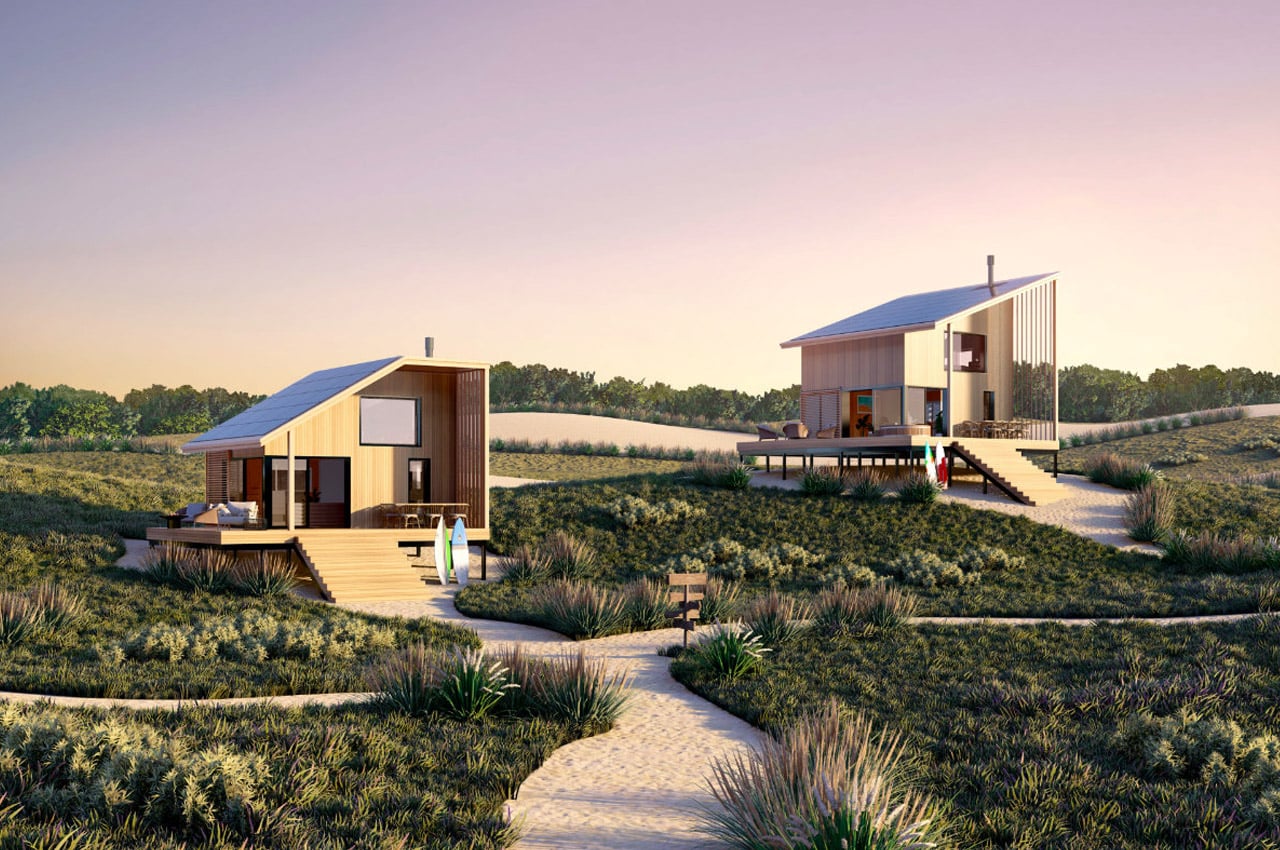
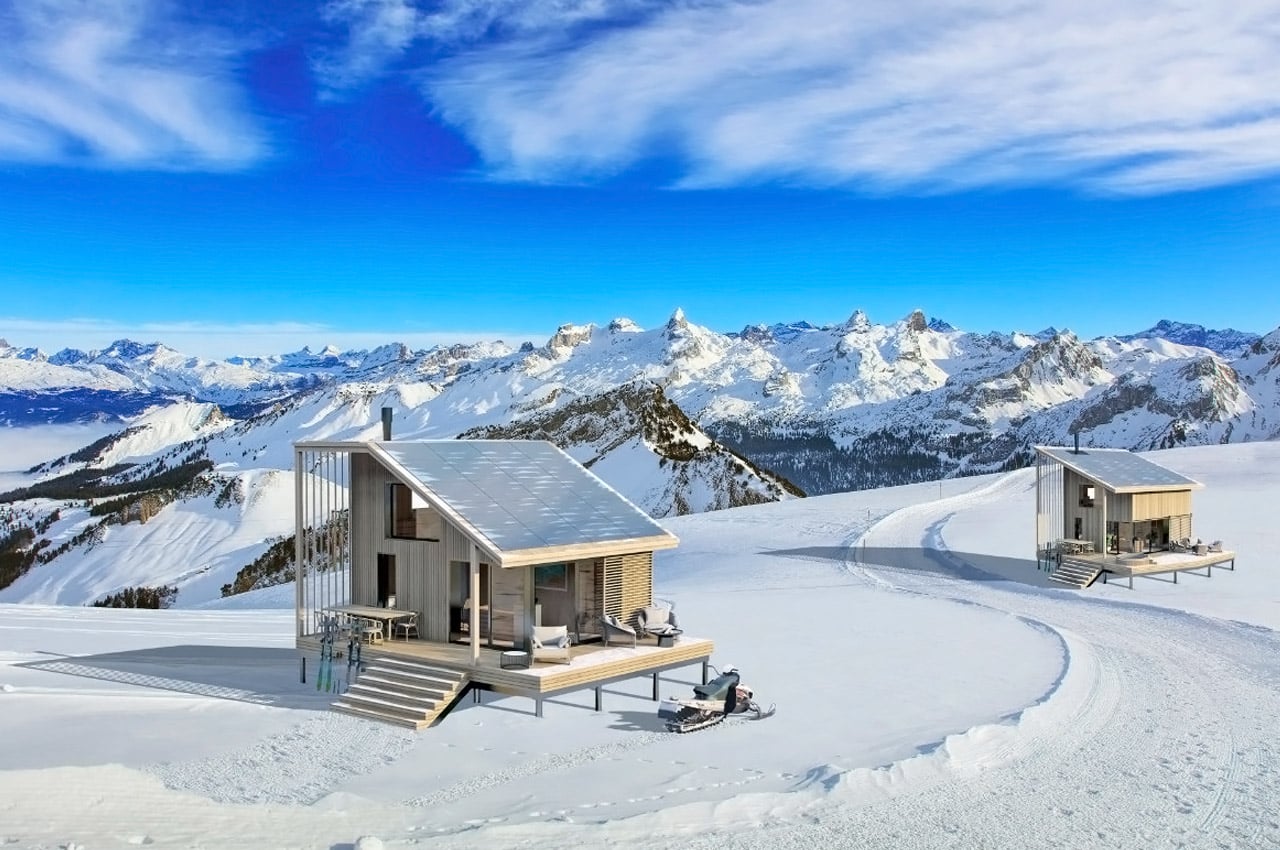
CABN.CO is on a mission to build energy-efficient and smart homes that can be placed in unique and diverse locations all over the world. These versatile cabins can be a home for you almost anywhere in the world – whether in the city or on a remote island in the Bahamas! These cabins focus heavily on solar shading and roof overhangs
Why is it noteworthy?
The homes are designed to be prefabricated, net-zero, solar powered, and biophilic.”CABN is considered a Net-positive Energy Building when applying thermal bridge free components airtight construction, electric systems with heat exchange ventilation, and on/site renewable energy generation within the building elements.” CABN.CO has also integrated the home with a biophilic design, which is further accentuated by the presence of cross-laminated timber.
What we like
- Sustainable + biophilic design
- Prefabricated structure
What we dislike
- No complaints!
3. Rock Cabins
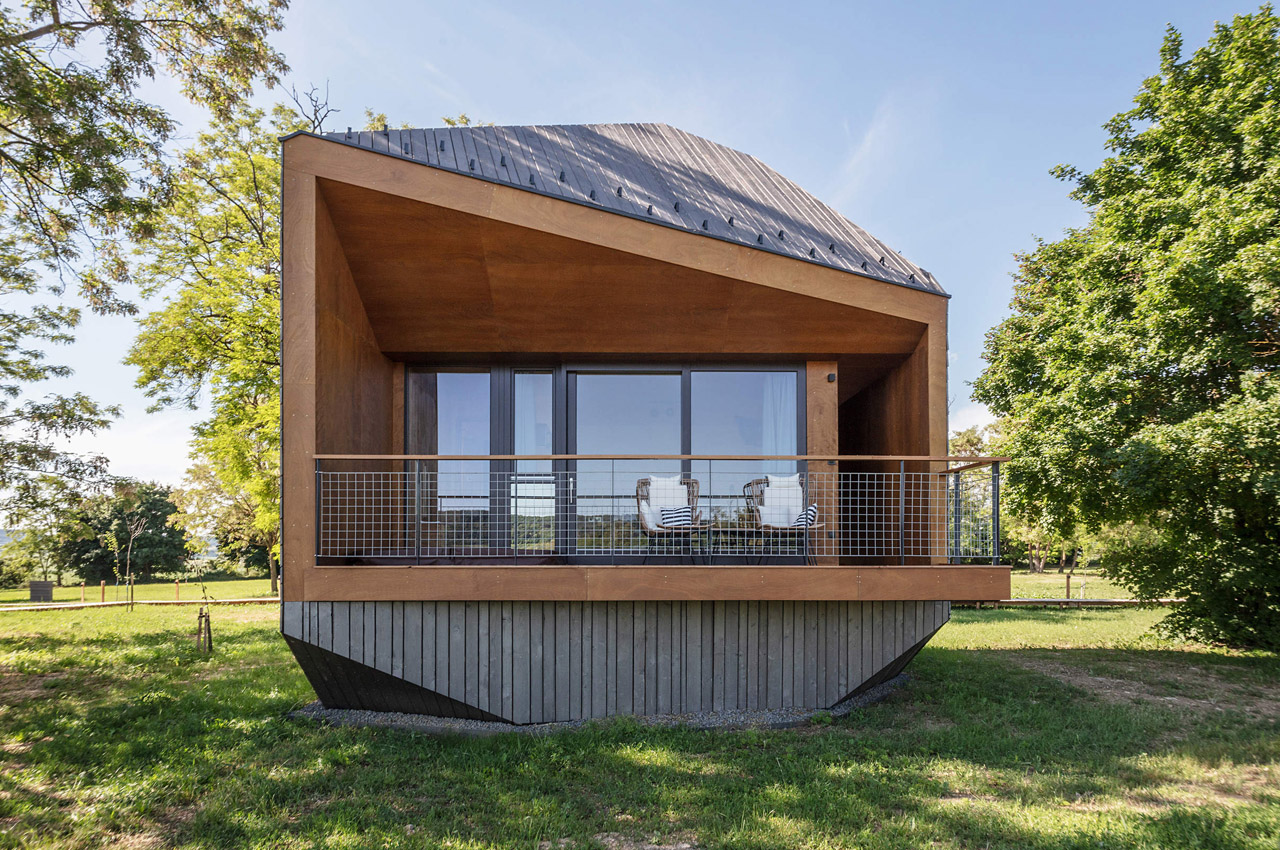
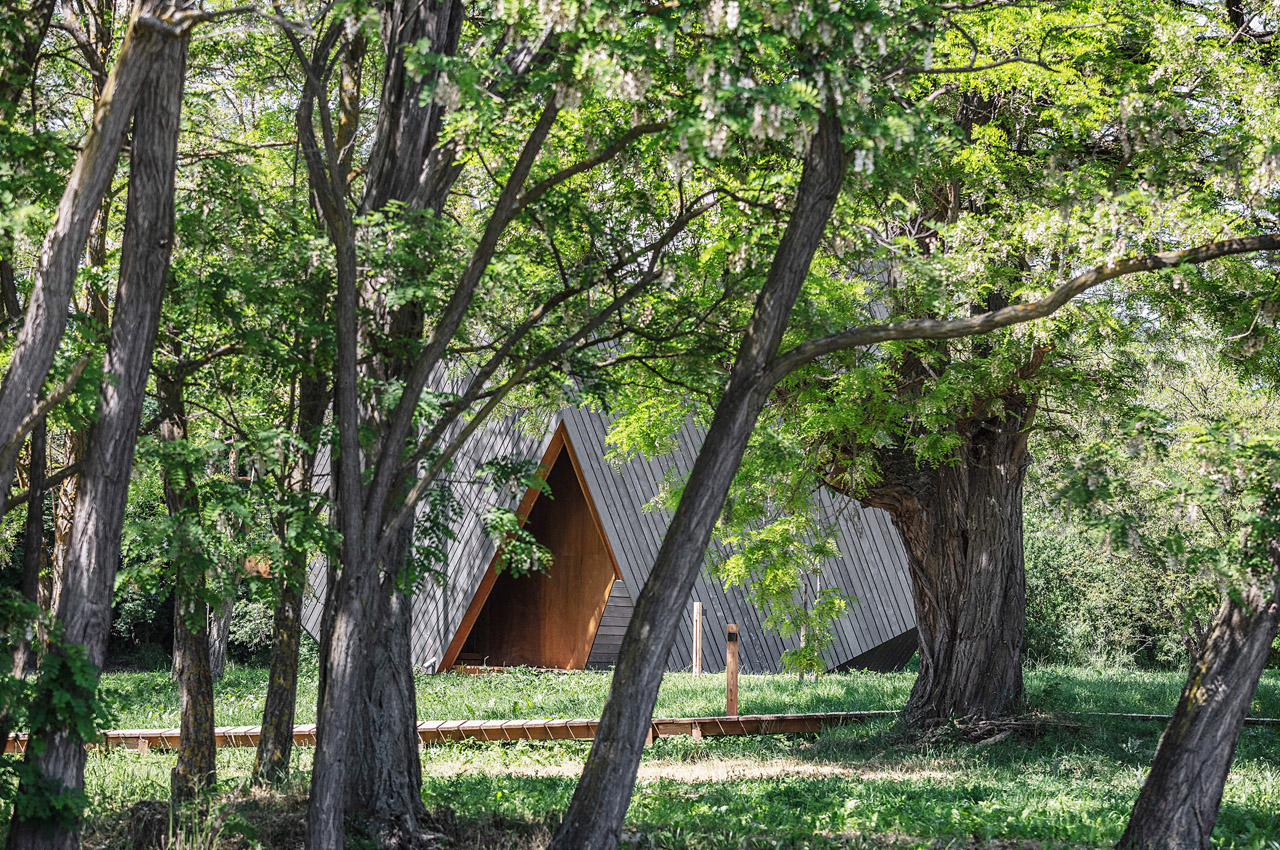
Nestled in the heart of Csóromfölde, Hungary is six stunning polygonal cabins called ‘Rock Cabins’. Designed and constructed by architectural firm Hello Wood in collaboration with TreeHouses, the brains, and brawn behind the immensely popular cabins in Noszvaj, the cabins have an almost mystical and mysterious appeal to them!
Why is it noteworthy?
Quite interestingly, the cabins are inspired by the shape of rocks. The intention behind these raw and real cabins was to create something that would harmoniously blend with nature, functioning as a natural extension of it. The cabin’s rock-like aesthetic helps it to effortlessly merge with the natural landscape surrounding it.
What we like
- Creates job opportunities for the local people
- Boosts the local economy
What we dislike
- No complaints!
4. Cabin in Longbranch
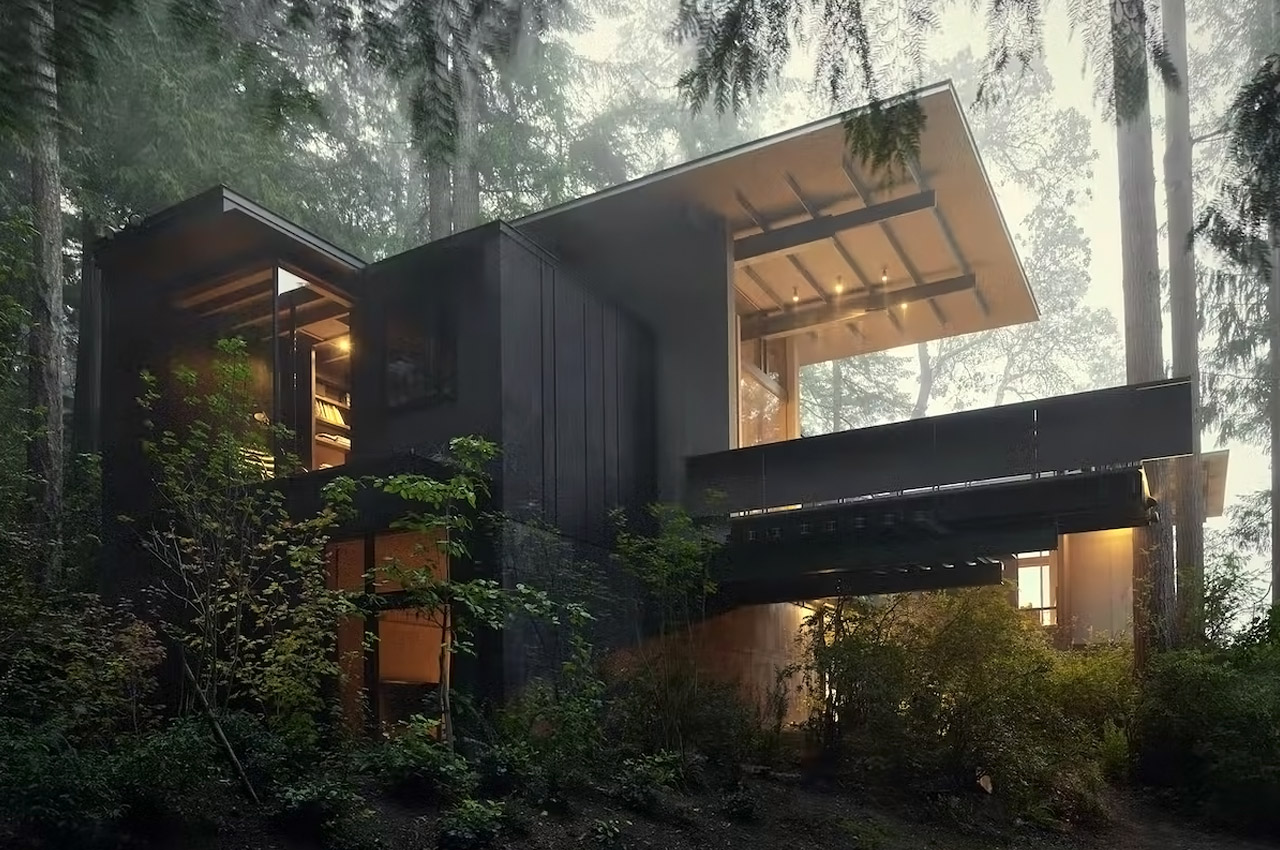
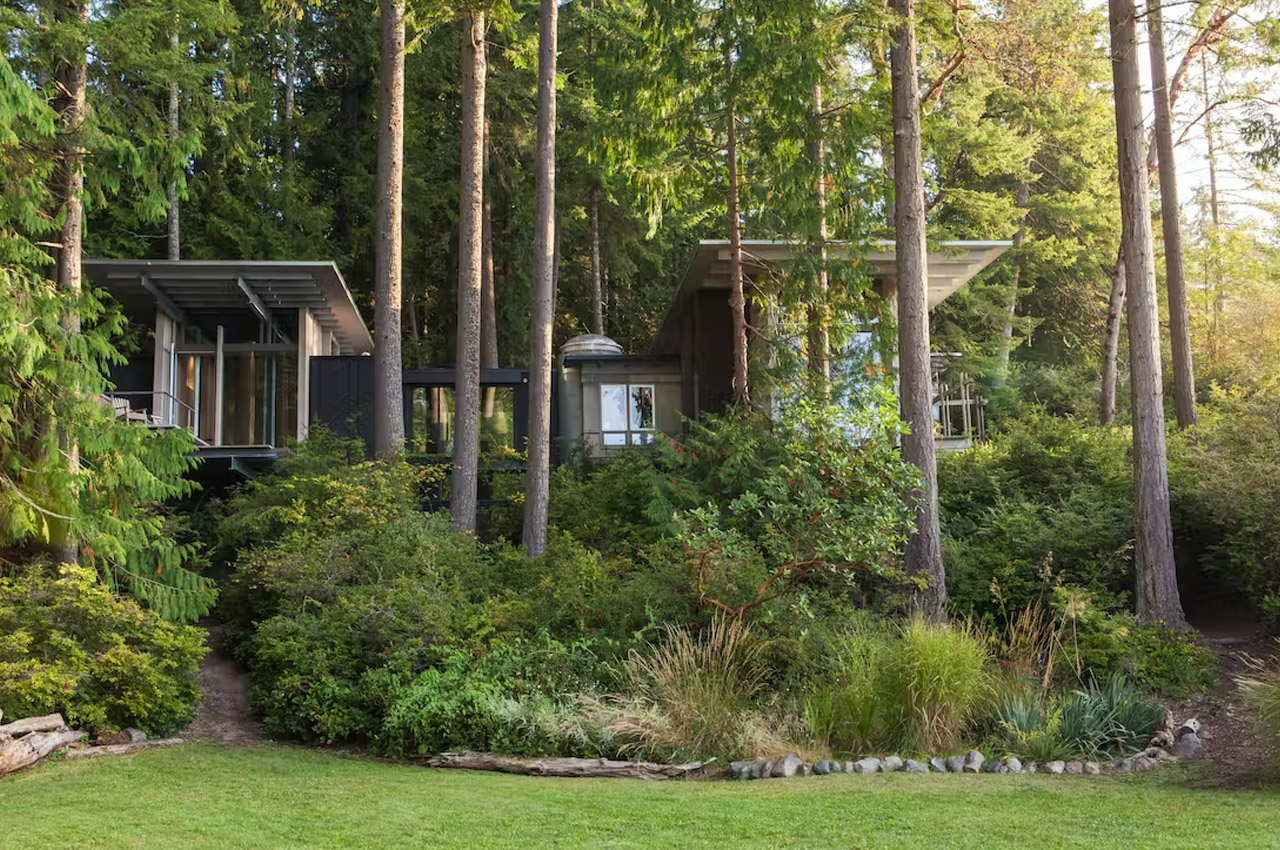
Located on Puget Sound, cushioned amongst massive fir trees in an ancient forest is a cabin that Jim Olson has been working on since he was eighteen years old. What originally started off as a 14-foot-square bunkhouse for Olson’s family in Longbranch, has now transformed into a beautiful cabin that makes for the ultimate weekend getaway.
Why is it noteworthy?
The cabin features a subtle wooden exterior, which allows it to harmoniously integrate with its natural surrounding. It truly looks at one with the forest. In fact, three mature fir trees have been allowed to grow through the openings in the deck, and one of them even exits through an opening in the roof!
What we like
- All the materials used to build the home were carefully selected to further encourage the natural connection
- A beautiful skylight over the bed, allowing you to fall asleep while gazing at the stars
What we dislike
- No complaints!
5. MiniMod
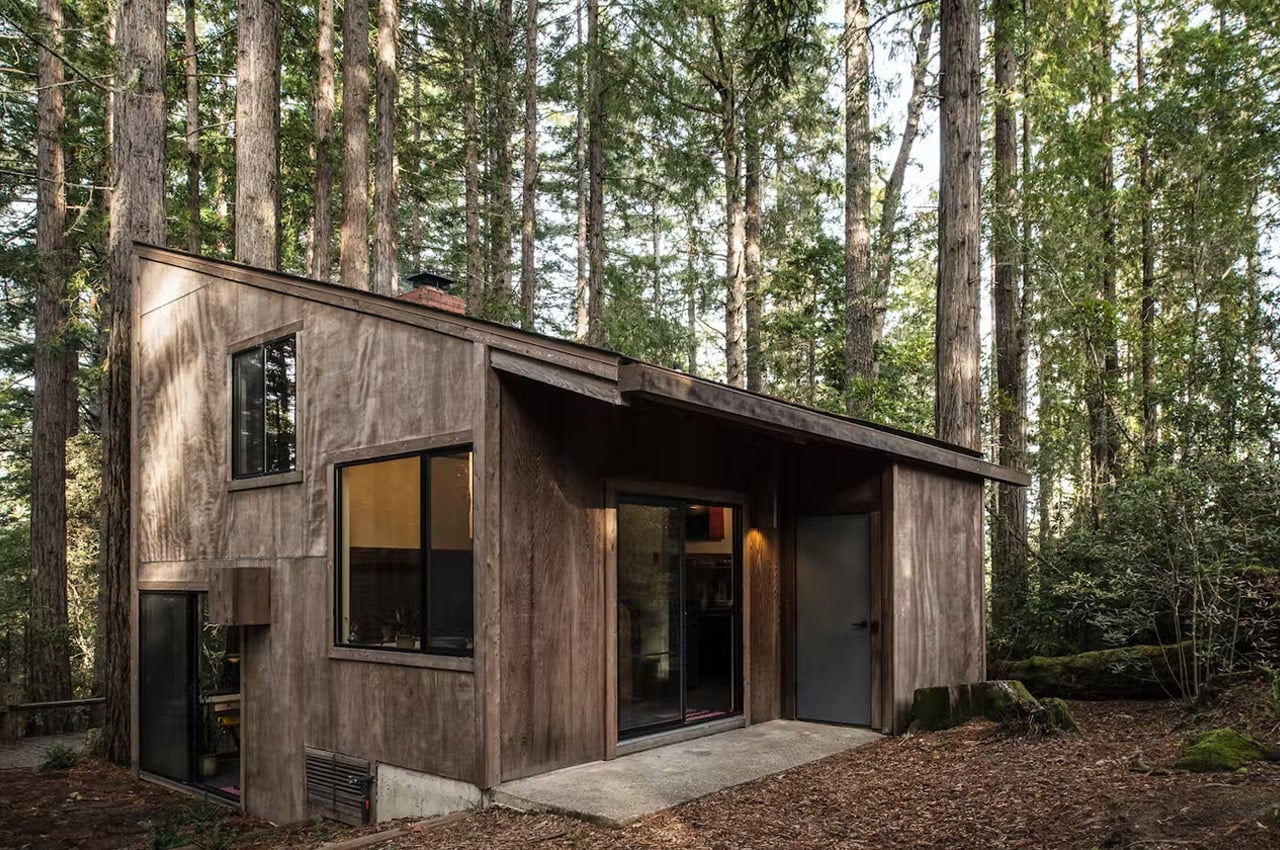
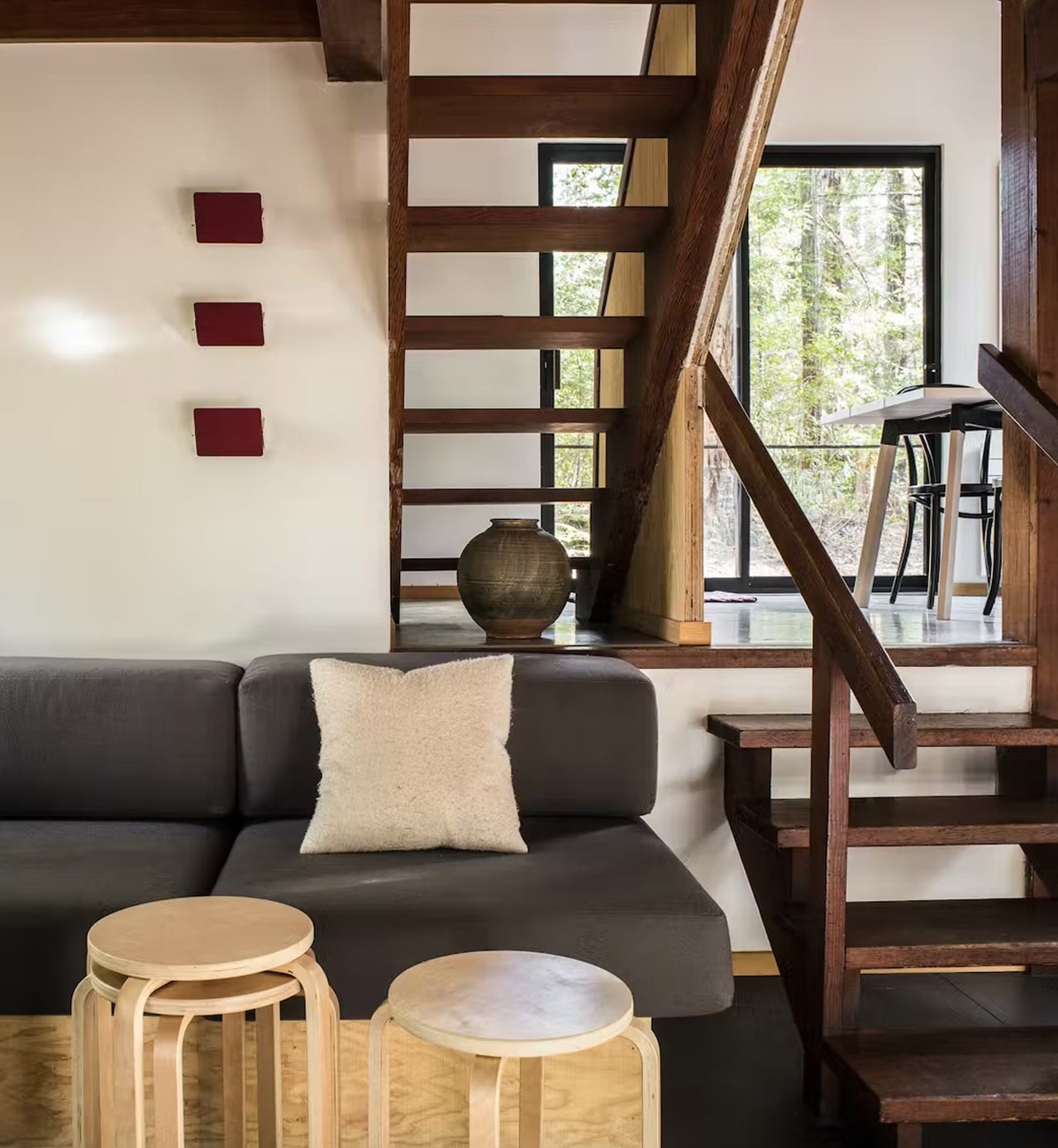
Nestled in the redwood forest of the popular and beautiful Sea Ranch community along the Sonoma, California coastline is a 684-square-foot weekend cabin that was originally designed by the acclaimed Bay Area architect Joseph Esherick. Called MiniMod, this cabin was lovingly restored and refurbished by Framestudio after it was purchased by its creative director Chad DeWitt, and his husband James Cook.
Why is it noteworthy?
The cabin was originally built to show how a comfortable and affordable home could be constructed while following the Sea Ranch building guidelines. The midcentury modern cabin has a stunning wooden exterior that allows it to effortlessly blend with the surrounding natural environment. The interiors feature three spacious levels which are connected via open wooden stairs that allow light to generously flow through the levels.
What we like
- While restoring the home, the designers carefully maintained the history and heritage of the cabin, while managing to make some modern upgrades
What we dislike
- No complaints!
6. Immerso
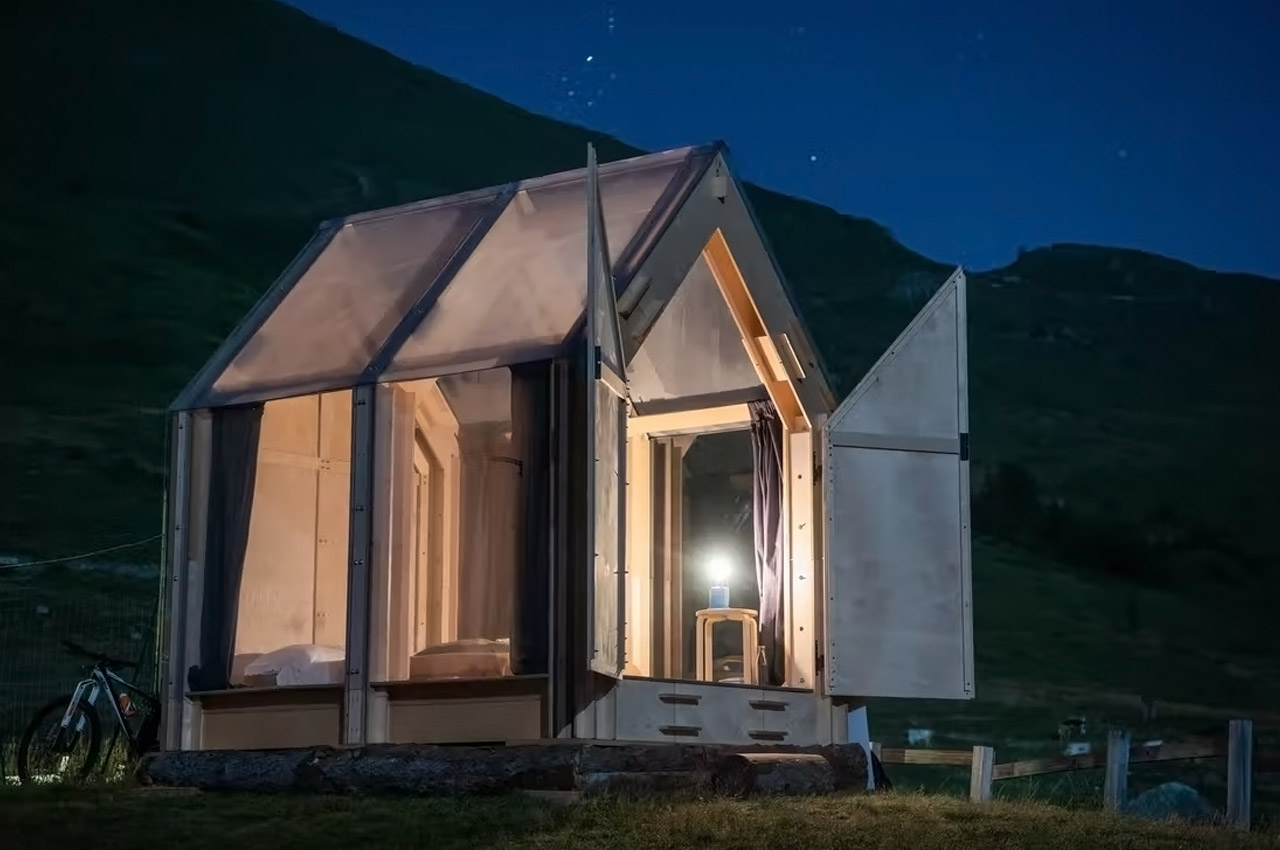
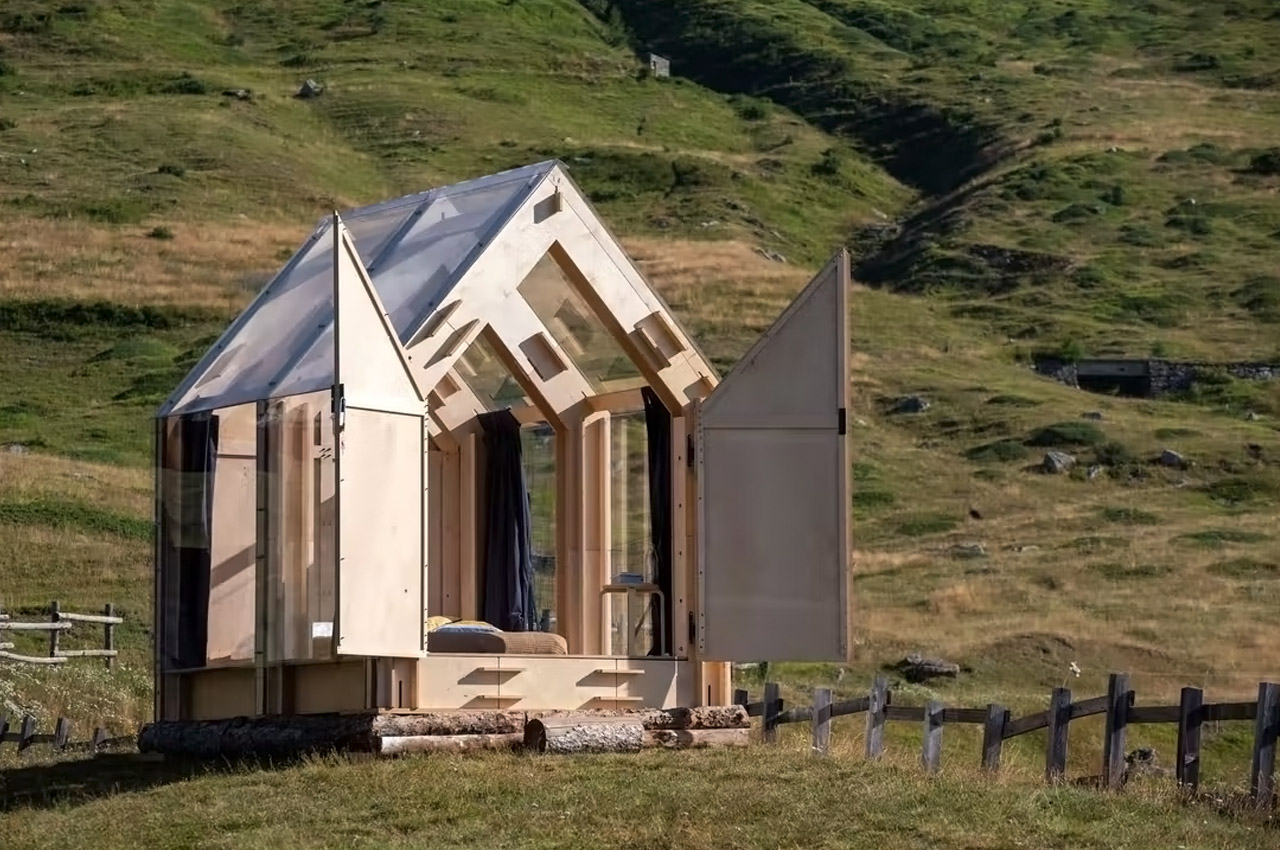
Located in the alpine village of Usseaux in Italy’s Piedmont region is the beautiful little ‘Immerso’ glamping cabin. Designed by Italian architects Fabio Vignolo and Francesca Turnaturi this mesmerizing cabin allows guests to leave behind the hectic city life, go off-grid, and unwind in the calmness of nature.
Why is it noteworthy?
The prefab shelter is easily moveable and takes only two hours to set up! Composed of birch plywood and plexiglass, the 65-square-foot modular cabin was designed with the goal of being ‘easy-to-assemble and flat-packed’. It can be built on-site without the use of any electrical equipment or much technical knowledge.
What we like
- Super easy to assemble
- Eco-friendly wooden build
What we dislike
- No complaints!
7. The Slope House
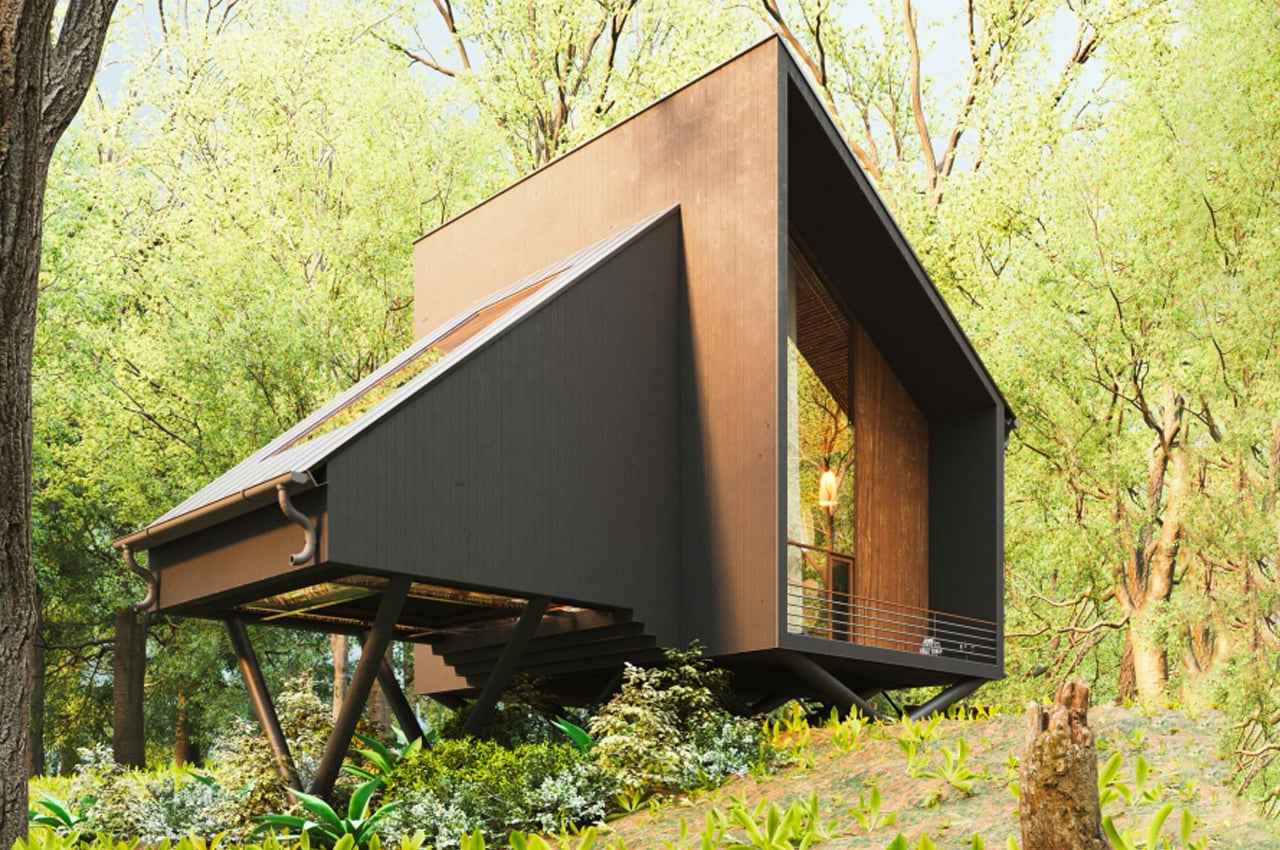
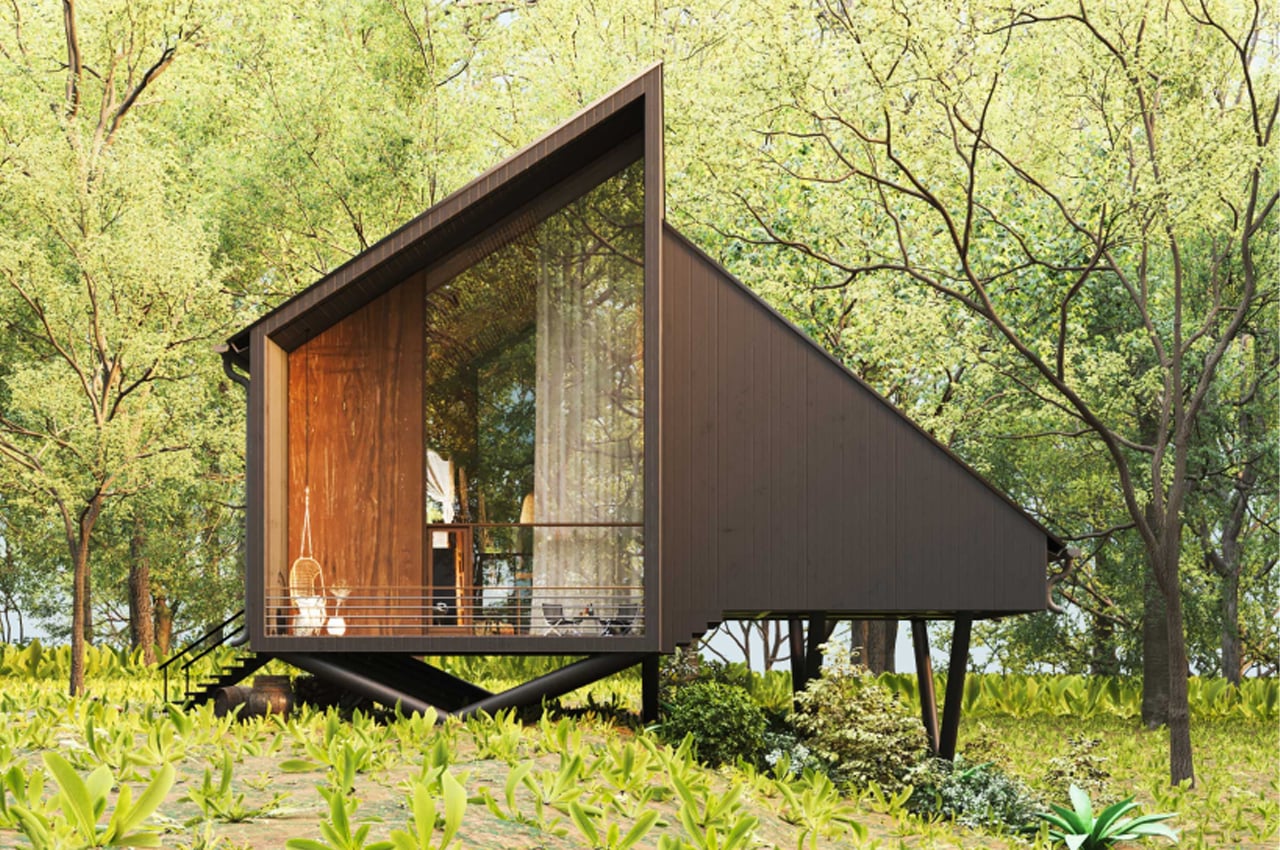
The Slope House from the 3D visualizer Milad Eshtiyaghi is an untraditional A-frame cabin that employs biophilic design inside and out. 3D visualizer and international architect Milad Eshtiyaghi has long been drawn to escapist hideaways perched on rugged, seaside cliffs and isolated cabins envisioned beneath the Northern Lights. Today, he turns his gaze to tiny cabins. A bit more quaint than treacherous, Eshtiyaghi’s latest 3D visualization finds an angular, timber cabin nestled atop an idyllic hillside somewhere in the rainforests of Brazil.
Why is it noteworthy?
Dubbed the Slope House, the timber cabin maintains a signature triangular frame that’s a thoughtful twist on the conventional A-frame cabin. Defined by two modules, one internal volume hosts the cabin’s bedroom while the other keeps the home’s main living spaces, like the dining area, kitchen, and den. The tiny cabin from Eshtiyaghi is envisioned propped atop a truss system that was specifically chosen to minimize the home’s impact on the preexisting landscape.
What we like
- A biophilic design style has been integrated into the cabin’s interior spaces
- Natural plants have been added inside the house as a small garden
What we dislike
- The theme and form of the home may be a bit too eccentric for some
8. Zero Cabin


Two sisters in Chile got the ZeroCabin crew to help create their dream retreat in a forest in the Lake District. The cabin faces the sea on the east and then on the west, you can see a 70-meter tall hill so you get a perfect view either way.
Why is it noteworthy?
They designed the north facade to have open windows and expanded the east facade to allow more sun to illuminate the house obliquely. And since the area has extreme humidity during the winter, they elevated the cabin 1.5 meters above the ground. The 1,184-square-foot cabin has three bedrooms, two bathrooms, a kitchen and living area on the ground floor, and a loft on the third floor.
What we like
- This ZeroCabin Krul uses timber as a frame for the entire structure but with structural insulated panels with pulverized cardboard
- The cabin is built to be green and so it uses a two-kilowatt solar system for its electrical needs and a five-cycle system that collects rainwater for its water needs
What we dislike
- No complaints!
9. Buster


Buster is located in Matamata, just a couple of hours away from Auckland, New Zealand. You will be able to hear the sound of spring river water flowing around you as you’re surrounded by trees, stones, valleys, and basically the joys of nature. It’s located below the Kaimai Range “amongst ancient native bush and farmland”. It is a tiny home perfect for one person or a couple who wants to temporarily or even permanently live in such an area and to have something that is built sustainably and with the environment and your comfort in mind.
Why is it noteworthy?
Instead of being made from timber, it uses black corrugate as it will last longer and can survive all the different kinds of weather that the area experiences. They also used plywood to bring “a sense of warmth” to the house and is in fact what is also used in the traditional kiwi trampers huts, giving you even more of a local feel but with modern conveniences. It’s a pretty good combination, having a more natural lodging but using sustainable technology and devices to give you comfort and function.
What we like
- Buster is powered by GridFree solar panels
- The house is oriented to the north so that it will be able to maximize the light during the summer and even during the winter
What we dislike
- The solar energy is only enough to power a small fridge, and lights, and to charge your smartphones
10. The Beach Cabin
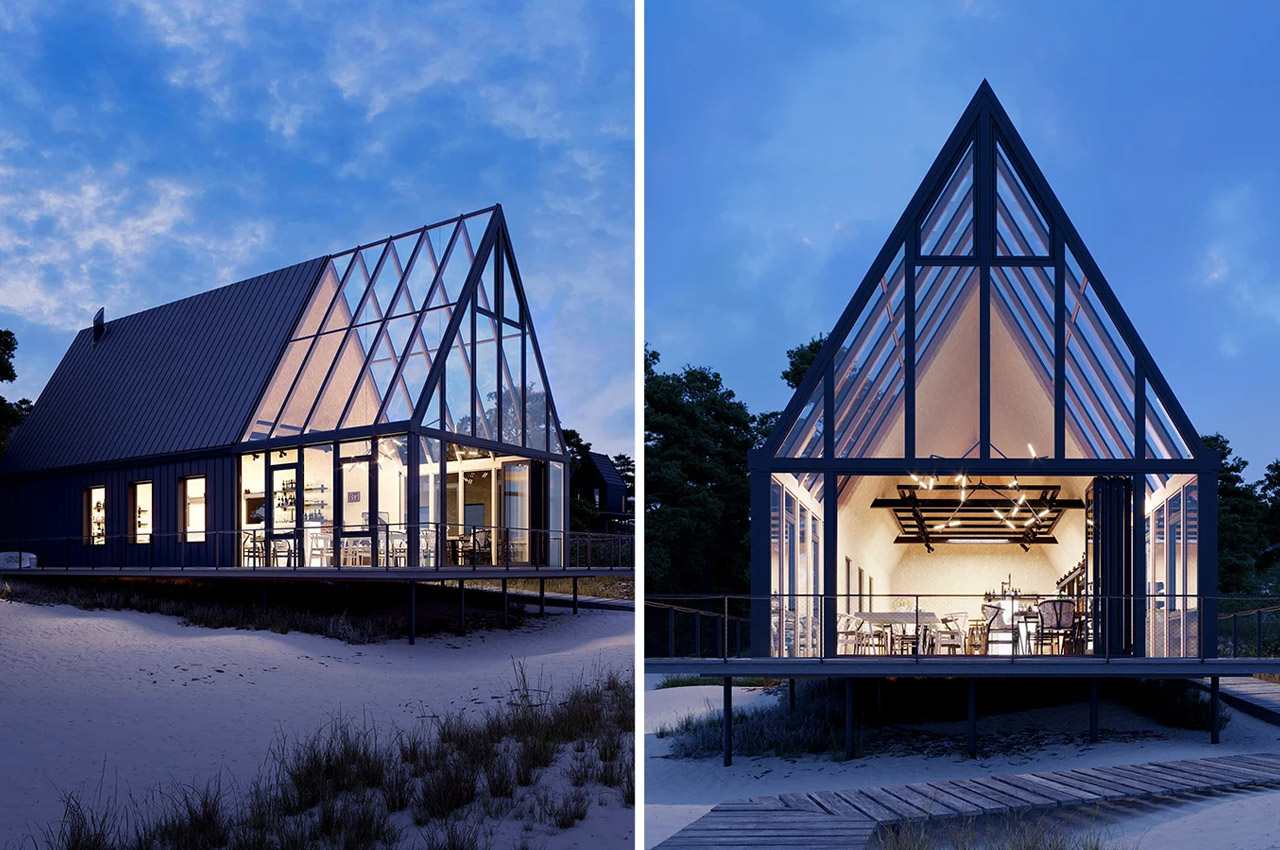
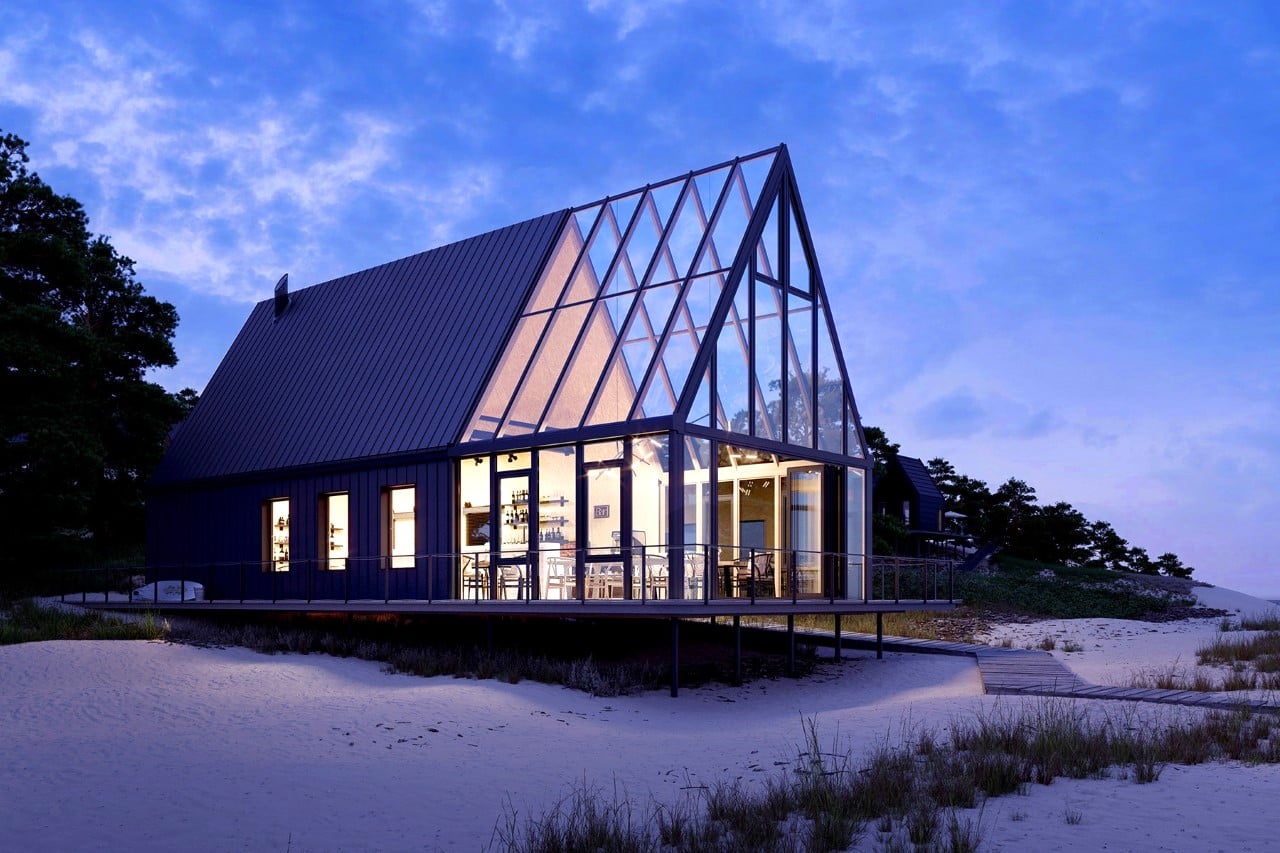
Part cabin part conservatory, the Beach Cabin on the Baltic Sea by Peter Kuczia offers the most stunning panoramic views of the beach. This small gastronomy facility located in north Poland near Gdansk boasts of a simple form that fits naturally into the beach environment but stands out thanks to its bold design.
Why is it noteworthy?
The cabin comes in two parts – an enclosed space on the side, and a vast, open living/dining area that provides shelter along with an abundance of natural light. This dining area is further split into two, with one half made in the traditional style of a cabin, while the other half is constructed entirely out of glass. This glass facade gives onlookers an absolutely sublime view of the ocean, the shoreline, and even the sky above!
What we like
- It literally floats above the sand
- Offers the most beautiful panoramic view
What we dislike
- No complaints!



